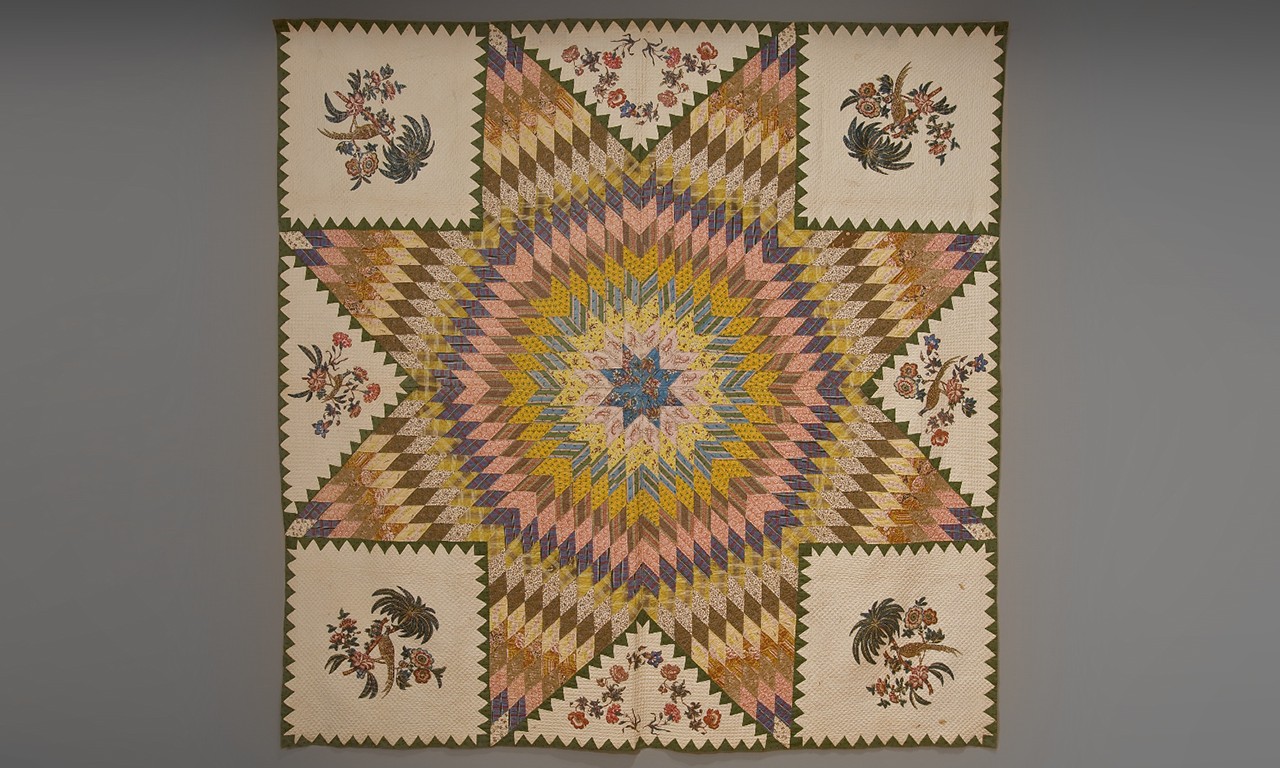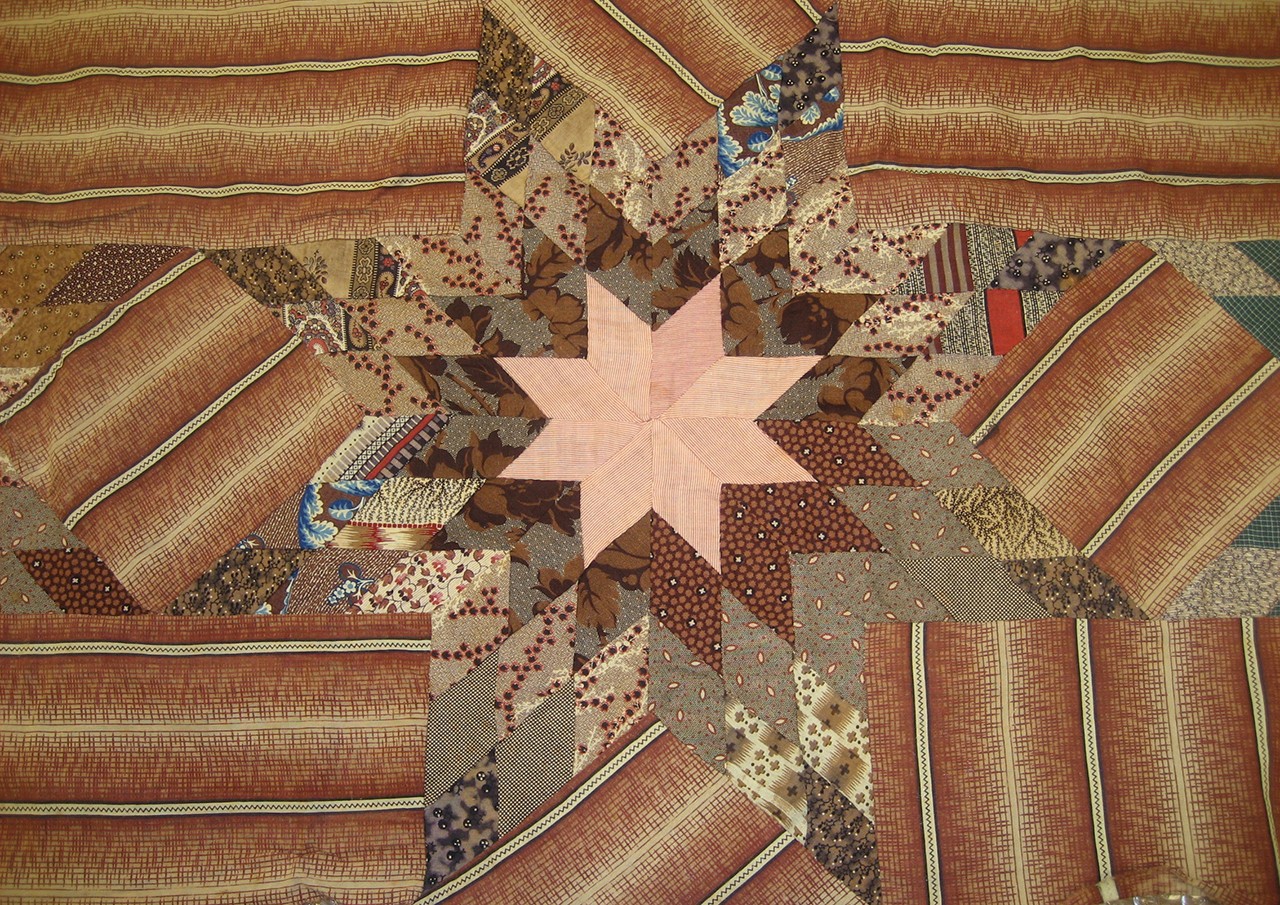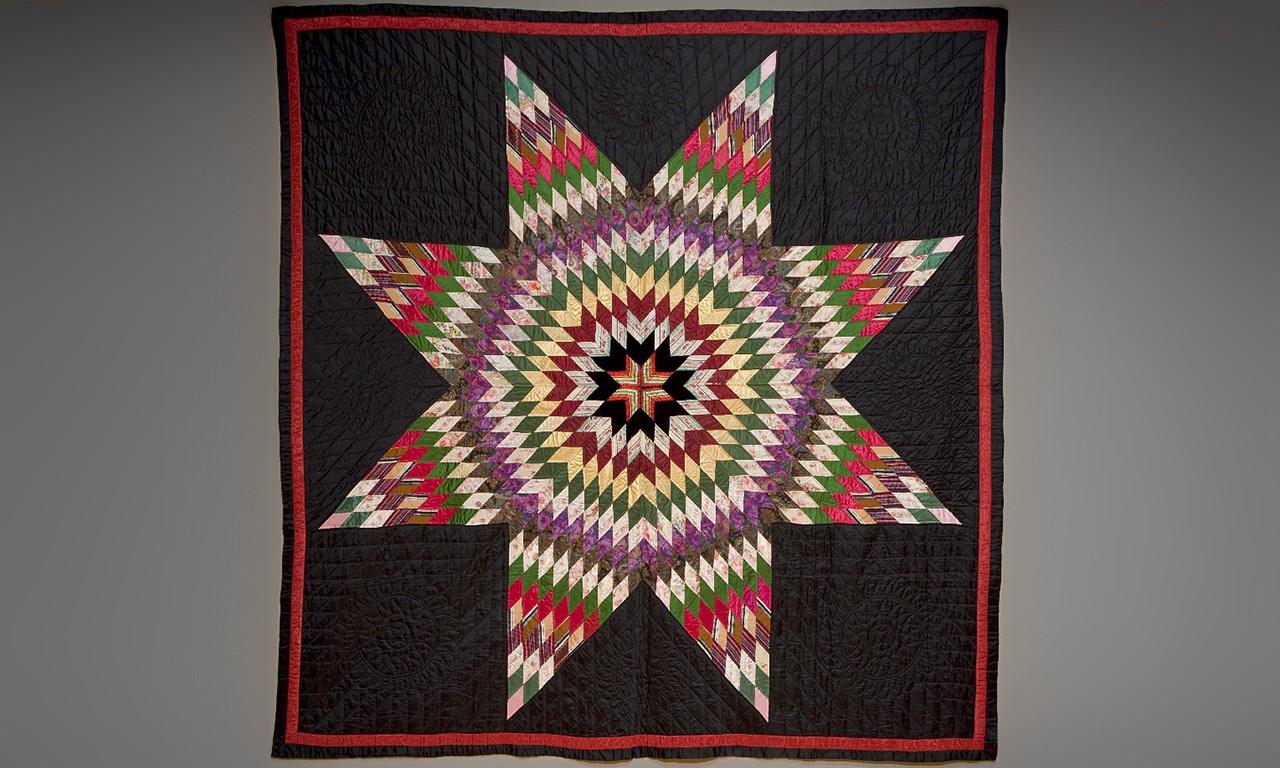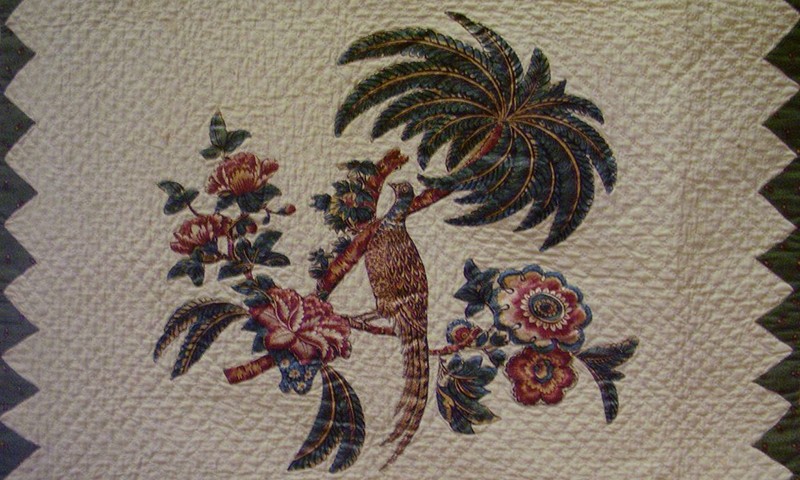 |
Star of Bethlehem Pattern Quilt, c. 1840
Maker unknown
Cotton; 100 x 100 in.
2002.14.86
Gift of Mr. William R. Moran |
Hindsight is This Year
With the holiday season now tragically in our rearview, and with us either already returned to our weekly lives or soon to reenter the fray, sometimes it is nice to take one last gander at an aspect of the late annum. This post pays a belated homage to Christmas, by examining a quilt pattern which took many names over time but is perhaps best known as the Star of Bethlehem, in Christian tradition it is the guiding star that safely brought the three wise men with their gifts of myrrh, frankincense and silver to the newborn Christ in Bethlehem. In it we look at the origins of two such quilts in the Bowers’ collections and discuss the history of the pattern and how it was made.
Birth of a Star
The Bowers Blog has previously looked at a few different types of quilts, most recently featuring crazy quilts in Shards of Fabric: Crazy Quilts of the Bowers Museum. The history of quilt-making in what would become the United States dates to the earliest European immigrants, but it was during the pioneer era—with families moving out west with only what they could carry with them and often only having scraps over full swaths of cloth—that quilting entered a renaissance. The star pattern was the most prevalent pattern employed by these early quilters, often serving as a metaphor of sorts for a guiding star safely leading travelers to their destination. The Star of Bethlehem is one of the hundreds of designs which included the astral motif, and it is one of the ones where it is most prominently displayed. The design was originally called the Mathematical Star when it was first used in Baltimore in the early 19th Century. Over time it took many names such as the Lone Star in Texas in the 1840s and different variants also had unique names such as the Blazing or Feathered Star pattern.
 |
Detail of Star Pattern Quilt, c. 1860
Maker unknown
Cotton
34815
Gift of Mrs. J. A. Marsh |
Diamonds are a Quilter’s Best Friend
Diamonds are distinctly not a quilter’s best friend. This design features a large central star, usually with eight points and composed of hundreds of smaller diamonds which tended to emanate in concentric color rings from the star’s center—coincidentally the same direction in which the quilt top was made. With so many of the small shapes needing to be cut homogeneously, doing so took extreme precision. If there was too much variation between the size of the diamonds used in a pattern, the quilt top will curl. Given that this pattern was a testament of the skill and patience of the creator, many quilters were drawn to this pattern to show off their talent. It was common practice for the Christian quiltmakers to insert at least one intentional mistake as a means of counterbalancing that pride before God.
 |
Star of Bethlehem Pattern Quilt, c. 1920
Maker unknown; New York
Silk, cloth, velvet, sateen and cotton; 80 1/2 x 82 in.
36757
Gift of Mr. and Mrs. Ben J. Allen |
Quilty as Charged
The larger of the two Star of Bethlehem pattern quilts featured in this post is over 100 in. in each dimension. This quilt incorporates an exceptional collection of expensive materials. Repeating green triangles, called a dogtooth pattern, borders the quilt and visually emphasizes the four corners which contain images of lush trees and exotic birds. Cut pieces of printed chintz fabric, these additional motifs were skillfully appliquéd to the quilt top to add further embellishment. The quilt was made to lie over the type of bed, typical in the period it was made, that was raised high above the floor to avoid cold drafts.
 |
Detail of 2002.14.86
Gift of Mr. William R. Moran |
Perse Brods, Nan’
Seen at the periphery of the same, larger quilt, broderie Perse is the skillful addition of elaborate printed motifs appliquéd to a solid quilt surface. Used as embellishments, the technique was first used in England by quilters who cut out portions of expensive foreign fabrics printed with exotic designs and applied them to less costly quilt tops. Favorite designs included images of nature, especially lush plants, exotic birds and animals found as far away as the Middle East and Asia. Broderie Perse, French for Persian embroidery, is a reference to the origin of the earliest used imported fabrics. The popularity of the technique led American fabric makers in the 19th century to print and produce their own special fabrics giving quilt makers easier access to new materials and more freedom and creativity in their work.
Text and images may be under copyright. Please contact Collection Department for permission to use. References are available on request. Information subject to change upon further research.





Comments